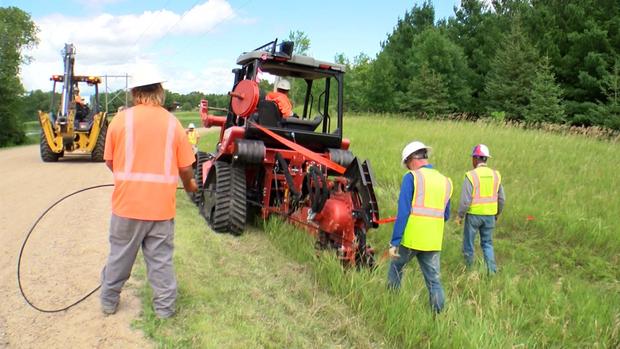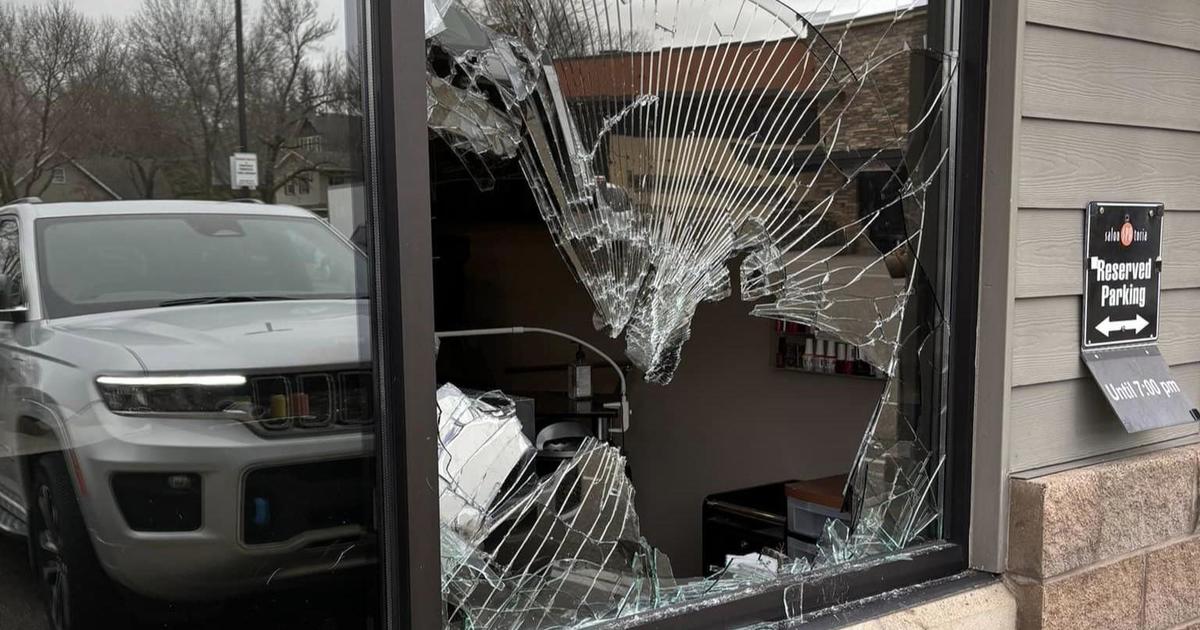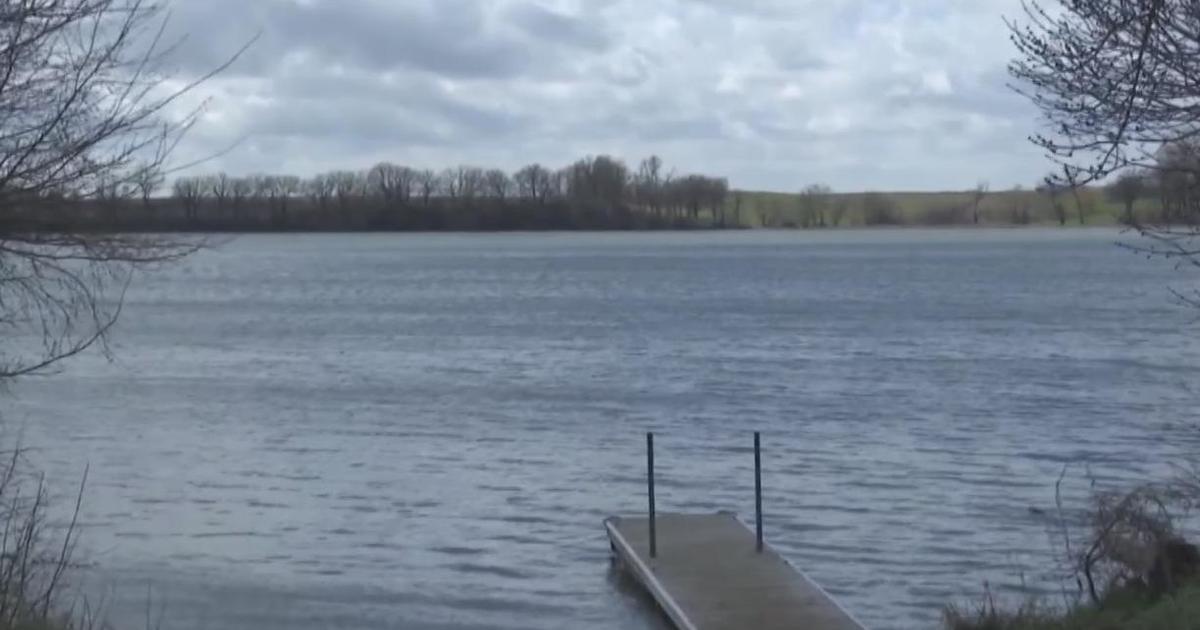What does it take to connect rural Minnesota to high-speed internet?
BRANDON, Minn. -- Outside the town limits of Brandon, construction is underway to give small town America a big upgrade: access to high-speed internet.
On a late July afternoon, crews installed fiber optic cable to connect 63 homes to high-speed internet, an effort that will take about 100 days from start to finish to complete.
The infrastructure put in place here is like a tree: The fiber cables are the trunks that connect back to the root, a data center, and smaller branches of cable connect to a home or business.
It's one example of projects across the state to connect 202,000 homes to broadband service that meets a standard set by the Federal Communications Commission. By law, Minnesota has a goal of every home or business reaching at least that benchmark -- speeds of 25 megabits per second for downloads and 3 megabits per second for uploads (25 Mbps/3 Mbps) -- by the end of 2022.
The state is 92 percent of the way there, according to the Minnesota Department of Employment and Economic Development (DEED), which is responsible for the Office of Broadband Development.
But the process of connecting the remaining unserved households can be complicated and costly, especially in rural areas, said David Wolf, CEO of Gardonville Cooperative Telephone Association, an internet provider supporting the project in Brandon.
"Our greatest expense is rural homes that are a mile off the road or very sparsely populated areas with a lot of rock in the ground or other barriers to construction," he said.
Some of those barriers in Minnesota: wetlands near lakes, rocks, other utility lines in the ground and Minnesota's short construction season.
Every state has its own challenges, said Mark Muller, president of TeleCom Construction, a Minnesota company that has installed fiber cable across the country.
"There's a big difference between working in the Midwest and Texas and Oklahoma and New Mexico," he said. "There's absolutely no one size fits all -- I wish it were that easy."
Significant federal, state funding for broadband
Because of the costs, the state and federal government are both investing in broadband expansion in a bipartisan fashion. The recent infrastructure package signed into law by President Joe Biden will bring at least $100 million to Minnesota for broadband on top of state dollars.
This year, the state's Border-to-Border Broadband Development Program has a record $95 million available, thanks to a mix of state and federal funds. It can cover up to 50 percent of a project's cost if it meets the state criteria for investment.
Steve Grove, commissioner of DEED, said the program aims to fill in the gap to incentivize telecom and cable companies to expand to the hardest-to-reach areas.
"You might have to go through swamp lands or you're going through areas where there aren't enough customers to make it economically feasible to lay that basic infrastructure," Grove said.
Wolf understands this firsthand: "If you look at a home that costs $15,000 to build fiber to and that home is going to generate $79 a month in revenue -- pretty simple economics there," he said.
The state hasn't met its 2022 speed goals, but Grove said the focus is more on meeting the 2026 goals with even faster speeds of 100 Mbps/20 Mbps, which is more in line with needs of consumers today.
"I think in the year 2022 if you had 25/3 in your home, you'd probably be frustrated more often than you'd be happy. It's just not quite good enough," he said. "Maybe you want to start your own startup in your basement or your garage but you need that access to broadband to get going. You shouldn't have to live in Minneapolis or St. Paul to do that."
Eighty-eight percent of the state has access to those speeds, Grove said, but the final stretch will come at an estimated total price tag of $1.3 billion.
"That's the magic number for us to get from here to those 2026 goals," Grove said. "I think it's going to take smart operating—taking advantage of federal funds, taking advantage of our state funds."
Wolf with the Gardonville Cooperative Telephone Association said those investments are essential.
"Without the public-private partnerships that we're getting from the feds and from the state, rural Minnesota would not have the fiber infrastructure it has going in today," he said.





